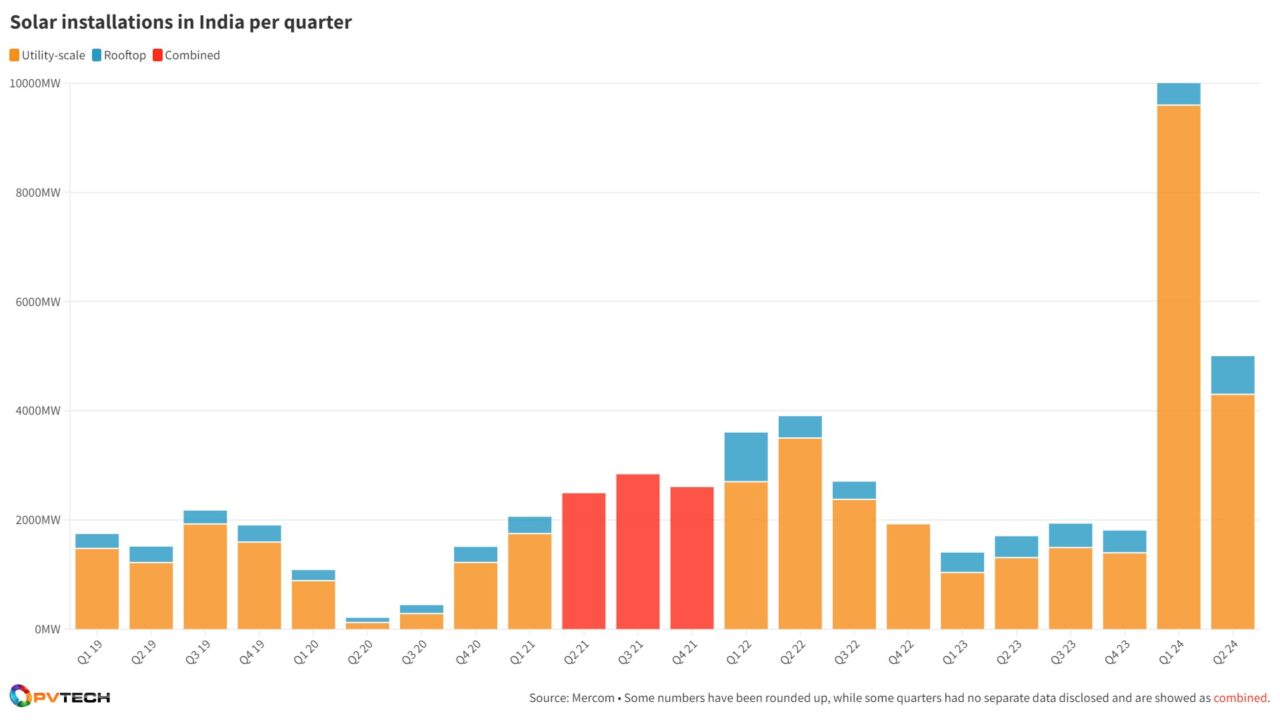
After a record first quarter with 10GW of solar PV capacity installed, Q2 2024 saw 5GW of capacity commissioned in India, up from Q2 2023 when the country added 1.7GW of solar PV. Despite a quarterly drop by half, Q2 2024 remains the second-highest number of PV additions this decade, as shown in the chart below.
Moreover, solar PV accounted for 71% of new power capacity additions in Q2 2024. Rajasthan, which recently saw a 400MW solar PV project commissioned, Gujarat, and Karnataka, were the leading states for new PV additions in India during Q2 2024.
The quarterly drop was due to project delays from utility-scale solar projects affected by grid connectivity and transmission issues. The reimposition of the Approved List of Models and Manufacturers (ALMM) in April – after being suspended in March 2023 – also affected the viability and commissioning of several open access projects.
Mercom’s 15GW of solar PV additions in H1 2024 are slightly over fellow market research firm JMK Research’s estimated additions in India for the same period at 12.2GW. JMK Research attributed the bulk of solar PV’s growth to the utility-scale market.
With the second half of the year still to go, India has already surpassed yearly numbers from the past five years. According to Mercom India, the country has a pipeline of utility-scale solar projects at 146GW, with another 104GW of projects tendered and pending auction.
Drop in tender activity
After more than trebling its tendered capacity in the fiscal year 2024 – period going from 1 April 2023 to 31 March 2024 – the country has slowed down in Q2 2024. 10.7GW of capacity was tendered in Q2 2024, a 21.6% decrease from the 13.6GW registered in Q2 2023. However, solar PV auctioned in Q2 2024 remained the same compared to the same period last year, with 6.7GW.
Earlier this month, the Solar Energy Corporation of India (SECI) issued a request for selection seeking 2GW of solar PV combined with 1GW/4,GWh of energy storage system technology.
Furthermore, the average cost of a utility-scale project in Q2 2024 fell 2% on a quarterly basis and nearly 26% on a yearly basis.





